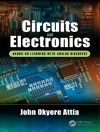Already today more than 90% of all programmable processors are employed in embedded systems. This number is actually not surprising, contemplating that in a typical home you might find one or two PCs equipped with high- of embedded systems, performance standard processors, but probably dozens including electronic entertainment, household, and telecom devices, each of them equipped with one or more embedded processors. Moreover, the elec- tronic components of upper-class cars incorporate easily over one hundred pro- cessors. Hence, efficient embedded processor design is certainly an area worth looking at. The question arises why programmable processors are so popular in embed- ded system design. The answer lies in the fact that they help to narrow the gap between chip capacity and designer productivity. Embedded processors cores are nothing but one step further towards improved design reuse, just along the lines of standard cells in logic synthesis and macrocells in RTL synthesis in earlier times of IC design. Additionally, programmable processors permit to migrate functionality from hardware to software, resulting in an even improved reuse factor as well as greatly increased flexibility.
Andreas Hoffmann & Rainer Leupers
Architecture Exploration for Embedded Processors with LISA [PDF ebook]
Architecture Exploration for Embedded Processors with LISA [PDF ebook]
Buy this ebook and get 1 more FREE!
Language English ● Format PDF ● ISBN 9781475745382 ● Publisher Springer US ● Published 2013 ● Downloadable 3 times ● Currency EUR ● ID 4651737 ● Copy protection Adobe DRM
Requires a DRM capable ebook reader












